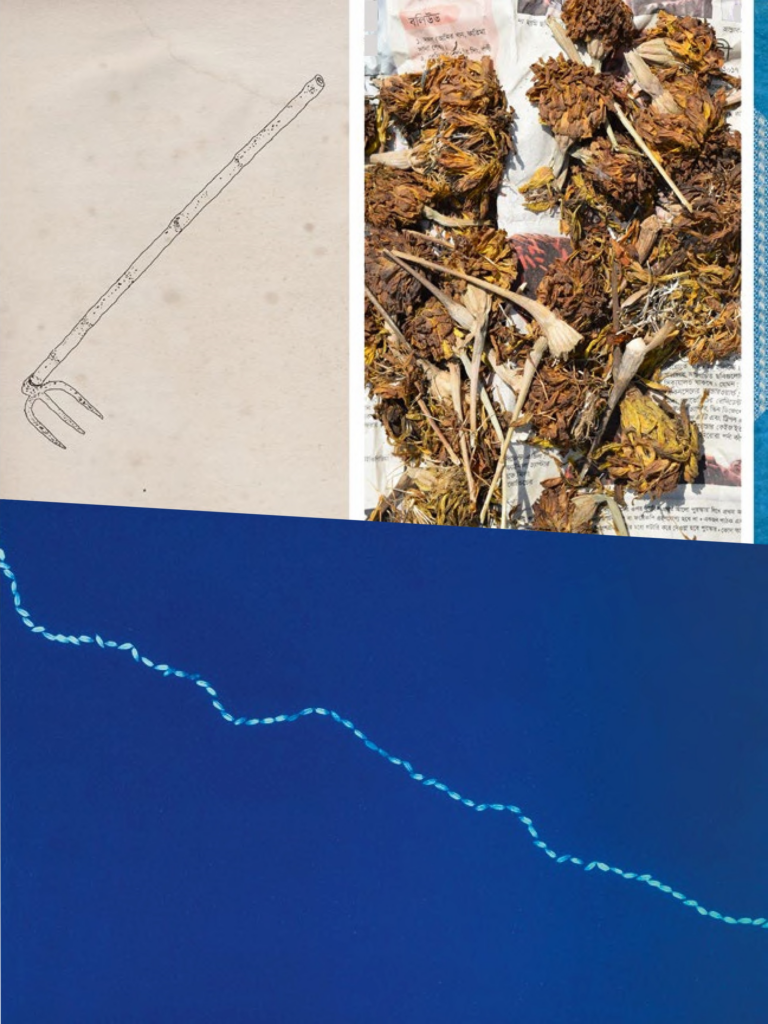MUNEM WASIF
Born 1984 in Comilla, Bangladesh, lives and works in Dhaka, Bangladesh
Seeds Shall Set Us Free II (2016–19), Kheyal (2015-19)

Munem Wasif works primarily with photography, video, and sound. His works emerge from long-term engagements with specific places and their histories, particularly within the context of Bangladesh. His complex installations often mix photographs with moving images and archival documents, investigating topics that resonate with larger global concerns, such as food sovereignty, labor exploitation, and borders and migration. Having exhibited at the Lyon Contemporary Art Biennale (2022), Dhaka Art Summit (2020), Taipei Biennial (2020), Centre Pompidou (2019), Sharjah Biennial (2019) Gwangju Biennale (2018), Victoria and Albert Museum (2017), and the Singapore Biennale (2016), Wasif was named the 2023 Robert Gardner Fellow in Photography at Harvard University, awarded to support his work on the critical history of the indigo industry in Bengal.
In his long-term project Seeds Shall Set Us Free II (2017–23) Wasif investigates the cultural history of grain—a topic closely connected with memories of the Bengal famine of 1943–44 under British colonial rule. In the installation, cyanotypes of rice grains and plants are combined with archival documents and photographs from one of the largest community grain banks in the country, the research center UBINIG (Policy Research for Development Alternative), which works to counter the corporatization of agricultural practices and promote biodiversity. These archival materials include handwritten documents and photographs produced by researchers and farmers and give a sense of locally rooted agricultural stakeholders and their struggle for legitimacy. Probing the impact of ecological colonialism, plantation farming, and cash crops, the work imagines an “ecosophical” type of agriculture, in which other species and beings have equal agency with humans, as reflected in the philosophy of local farmers.
The film Kheyal (2015–19) is an intimate portrait of Old Dhaka, a historical quarter of the Bangladeshi capital, and its residents. Following four characters through the neighborhoods of Bangla Bazar and Farashganj, the film is part fiction, part documentary. Kheyal (originally derived from the Persian/Arabic for “fiction” or “imagination”) is the name of a major form of Hindustani classical music that offers freedom for musical improvisation and is often linked to poetry about longing. This title bestows a metaphorical meaning to the hovering nature of the characters, while also referencing the artist’s relationship with Old Dhaka. The sequences amplify the city’s infrastructure and affective textures, pursuing memories sustained by the senses—scents, colors, and the passing of time—while the sounds of riyaz, or music practice, guide our ears.
